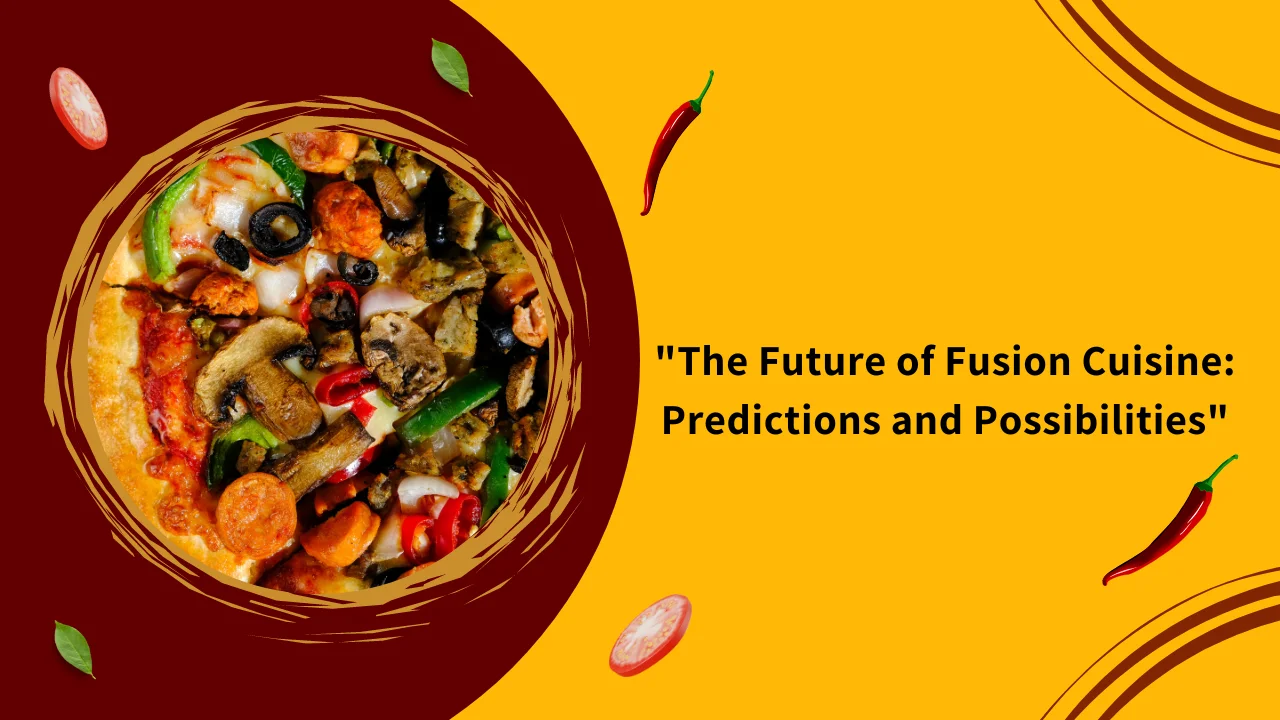Fusion cuisine has transformed the culinary world by merging diverse ingredients, techniques, and traditions into innovative dishes that captivate the palate. As we look ahead, fusion cuisine continues to evolve, influenced by global trends, technological advancements, and shifting consumer preferences. This article explores the future of fusion cuisine, offering predictions and possibilities for how this dynamic culinary genre might develop in the coming years.
1. Technological Innovations
a. Molecular Gastronomy: The techniques of molecular gastronomy, which involve manipulating ingredients at a molecular level to create new textures and flavors, will likely play an increasingly significant role in fusion cuisine. Chefs may experiment with creating new flavor combinations and presentations using tools like sous-vide cooking, nitrogen freezing, and espuma (foam) technology.
b. 3D Food Printing: 3D food printing technology allows for the precise creation of intricate shapes and textures. As this technology advances, we may see fusion dishes that not only combine diverse ingredients but also showcase artistic designs and complex textures. This could lead to visually stunning and customizable culinary creations.
c. AI and Data-Driven Cuisine: Artificial intelligence and machine learning are poised to impact culinary innovation. AI systems can analyze vast amounts of data to predict flavor combinations, optimize recipes, and even generate new fusion dish concepts. This technology could lead to the creation of highly innovative and personalized fusion cuisine experiences.
2. Sustainable and Ethical Fusion
a. Plant-Based Fusion: As the demand for plant-based diets grows, fusion cuisine will likely embrace more plant-based ingredients. Expect to see creative combinations of plant-based proteins and traditional ingredients, resulting in innovative dishes that cater to both environmental and dietary concerns.
b. Sustainable Practices: Sustainability will become a key focus in fusion cuisine. Chefs may prioritize locally-sourced and seasonal ingredients, reduce food waste, and implement eco-friendly practices. Fusion dishes that highlight sustainable ingredients and practices will resonate with environmentally-conscious diners.
c. Ethical Sourcing: The future of fusion cuisine may involve a stronger emphasis on ethical sourcing of ingredients. Chefs and restaurants will likely focus on transparency in sourcing, fair trade practices, and supporting local farmers and producers.
3. Global Influences and Regional Focus
a. Expanding Global Palates: As global travel becomes more accessible and cultural exchanges increase, fusion cuisine will continue to incorporate flavors from lesser-known culinary traditions. We might see the integration of African, Middle Eastern, and South American ingredients and techniques into fusion dishes, broadening the scope of global flavors.
b. Regional Fusion: While global influences will continue to shape fusion cuisine, there will also be a growing emphasis on regional fusion. This involves blending local culinary traditions with external influences, resulting in unique regional fusion dishes that celebrate local ingredients and heritage while incorporating global elements.
4. Culinary Experiences and Customization
a. Interactive Dining: The future of fusion cuisine may include more interactive dining experiences. Restaurants could offer customizable fusion dishes where diners select from a range of ingredients and flavors to create their personalized fusion experience. Interactive dining could also involve immersive experiences, such as cooking classes or chef’s table events, where diners participate in the creation of fusion dishes.
b. Fusion Food Trucks and Pop-Ups: The trend of food trucks and pop-up restaurants will likely continue to play a role in the evolution of fusion cuisine. These mobile and temporary dining options allow chefs to experiment with new fusion concepts and bring innovative dishes to diverse locations, reaching a wide audience.
5. Health and Wellness Trends
a. Nutritional Fusion: As health and wellness trends gain prominence, fusion cuisine will adapt to incorporate more nutritious and functional ingredients. Expect to see fusion dishes that blend traditional flavors with superfoods, probiotics, and other health-boosting ingredients.
b. Dietary Inclusivity: Fusion cuisine will increasingly cater to various dietary needs and preferences, including gluten-free, low-carb, and allergen-free options. Creative adaptations of traditional dishes will ensure that fusion cuisine remains inclusive and accessible to a diverse range of diners.
6. Cultural Exchange and Innovation
a. Culinary Collaborations: The future of fusion cuisine will likely see increased collaboration between chefs from different cultural backgrounds. These partnerships can lead to innovative dishes that combine the best elements of each chef’s culinary expertise, pushing the boundaries of traditional fusion cuisine.
b. Cultural Sensitivity: As fusion cuisine evolves, there will be a growing emphasis on cultural sensitivity and respect. Chefs will need to navigate the delicate balance of blending culinary traditions while honoring the origins and significance of the ingredients and techniques used.
Conclusion
The future of fusion cuisine is filled with exciting possibilities and opportunities. Technological innovations, sustainable practices, global influences, and evolving consumer preferences will continue to shape the landscape of fusion cuisine. As chefs and diners embrace new trends and explore creative combinations, fusion cuisine will remain a dynamic and ever-evolving genre that celebrates the rich diversity of global gastronomy. By staying attuned to these trends and possibilities, fusion cuisine will continue to captivate and inspire, offering new and innovative culinary experiences for years to come.
